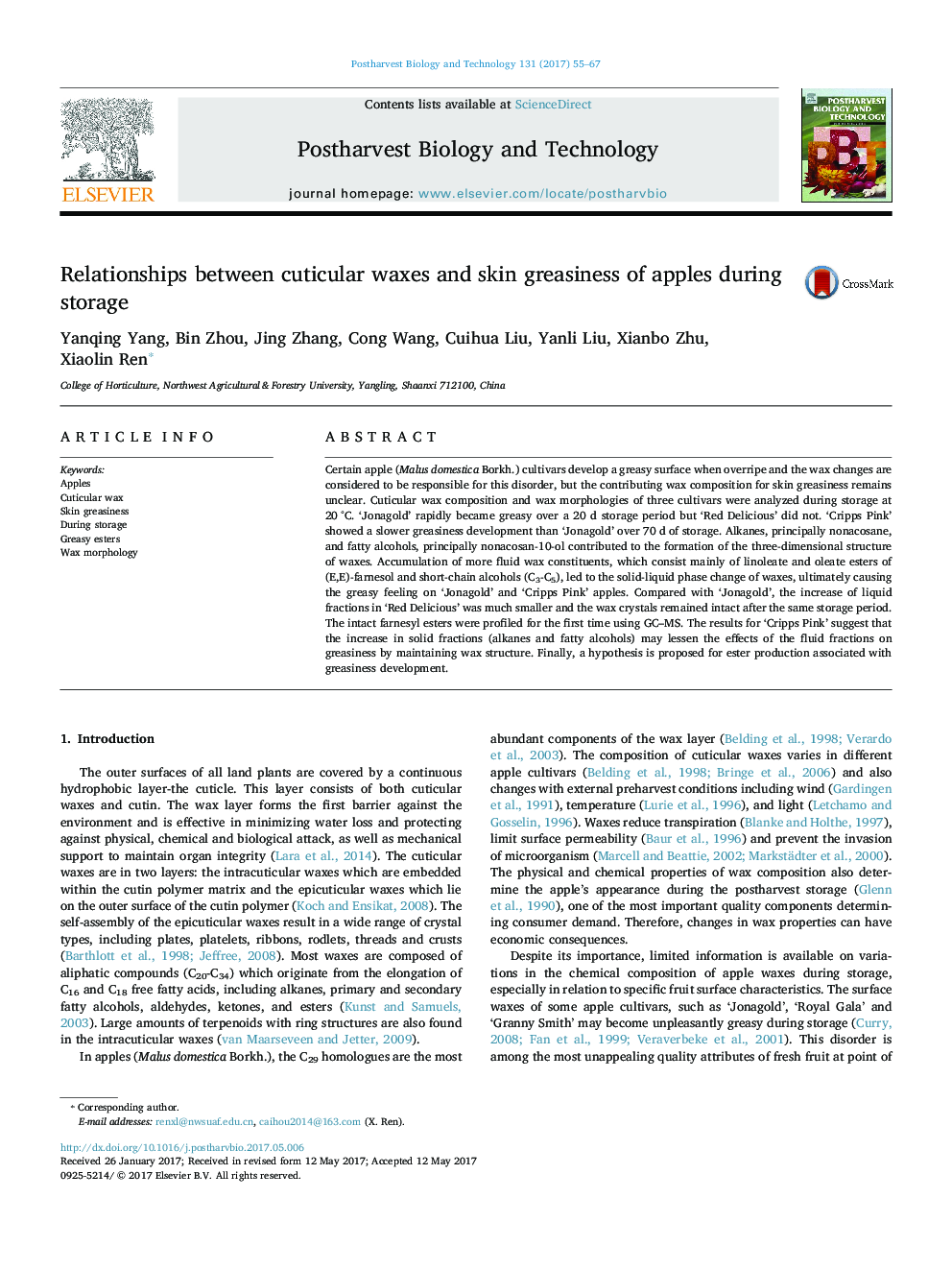| Article ID | Journal | Published Year | Pages | File Type |
|---|---|---|---|---|
| 5762698 | Postharvest Biology and Technology | 2017 | 13 Pages |
Abstract
Certain apple (Malus domestica Borkh.) cultivars develop a greasy surface when overripe and the wax changes are considered to be responsible for this disorder, but the contributing wax composition for skin greasiness remains unclear. Cuticular wax composition and wax morphologies of three cultivars were analyzed during storage at 20 °C. 'Jonagold' rapidly became greasy over a 20 d storage period but 'Red Delicious' did not. 'Cripps Pink' showed a slower greasiness development than 'Jonagold' over 70 d of storage. Alkanes, principally nonacosane, and fatty alcohols, principally nonacosan-10-ol contributed to the formation of the three-dimensional structure of waxes. Accumulation of more fluid wax constituents, which consist mainly of linoleate and oleate esters of (E,E)-farnesol and short-chain alcohols (C3-C5), led to the solid-liquid phase change of waxes, ultimately causing the greasy feeling on 'Jonagold' and 'Cripps Pink' apples. Compared with 'Jonagold', the increase of liquid fractions in 'Red Delicious' was much smaller and the wax crystals remained intact after the same storage period. The intact farnesyl esters were profiled for the first time using GC-MS. The results for 'Cripps Pink' suggest that the increase in solid fractions (alkanes and fatty alcohols) may lessen the effects of the fluid fractions on greasiness by maintaining wax structure. Finally, a hypothesis is proposed for ester production associated with greasiness development.
Keywords
Related Topics
Life Sciences
Agricultural and Biological Sciences
Agronomy and Crop Science
Authors
Yanqing Yang, Bin Zhou, Jing Zhang, Cong Wang, Cuihua Liu, Yanli Liu, Xianbo Zhu, Xiaolin Ren,
